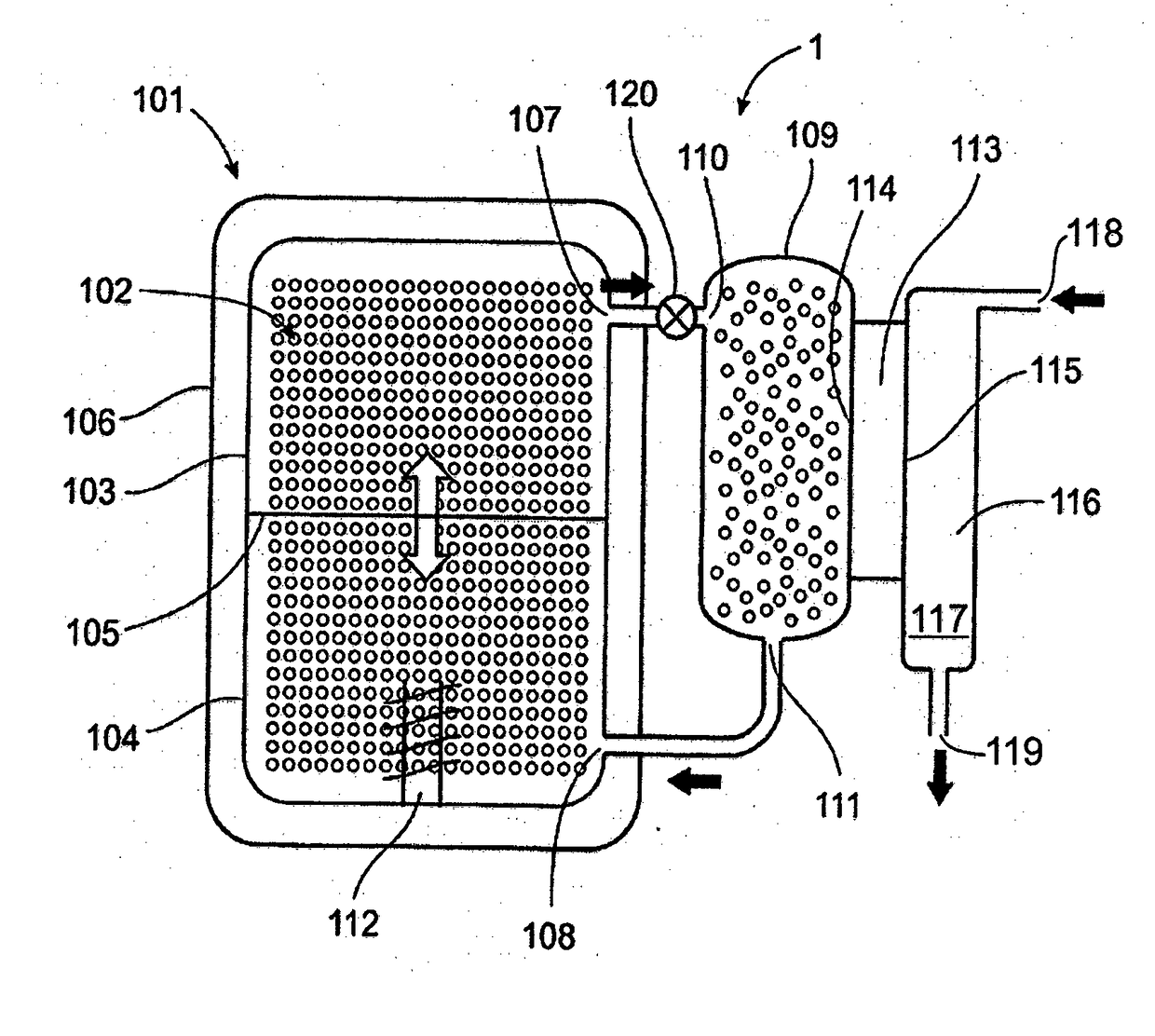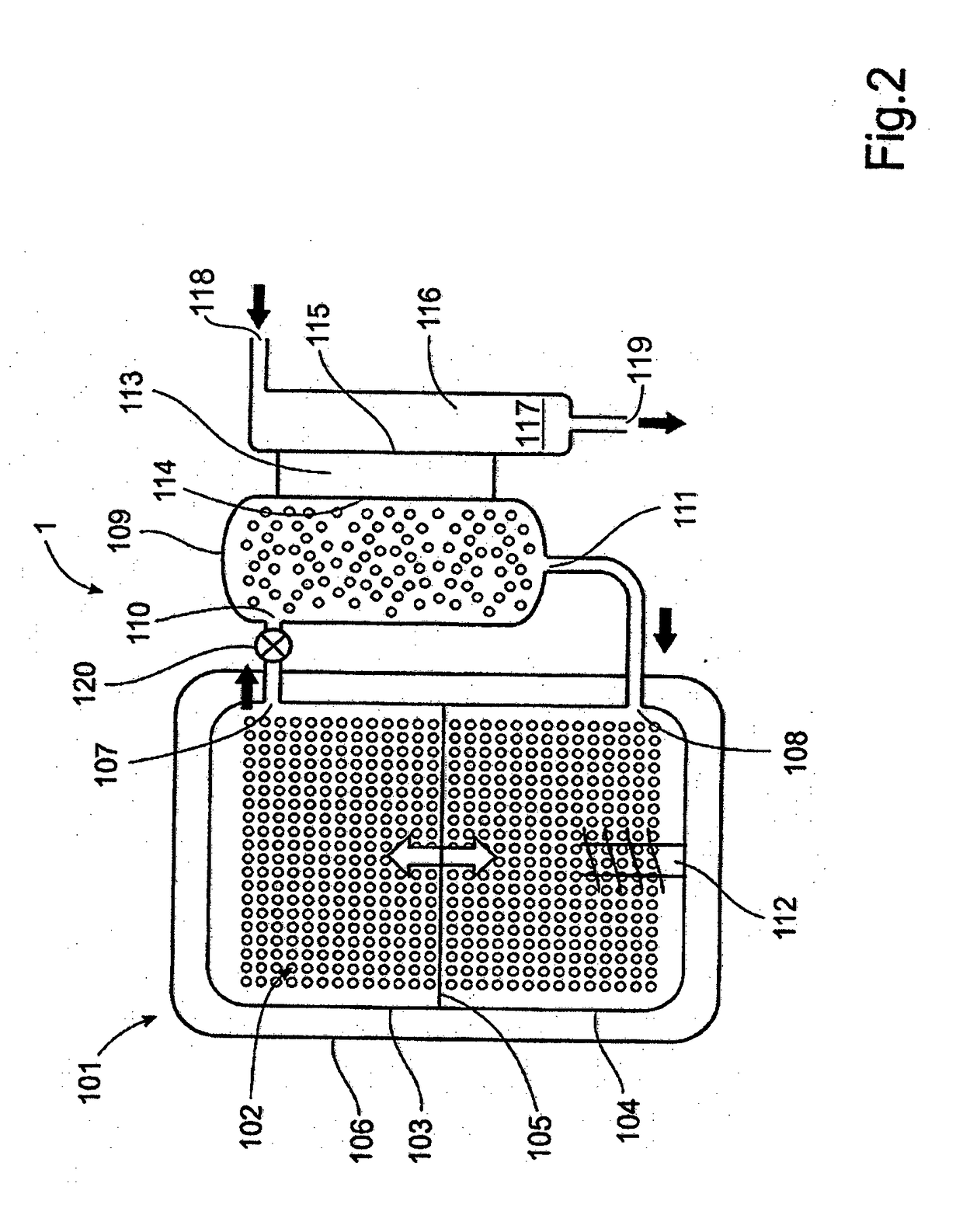An energy carrier system for a vehicle
a technology of energy carrier and vehicle, which is applied in the direction of battery/fuel cell control arrangement, electrochemical generator, battery/cell propulsion, etc., can solve the problems of lubrication and recapturing of particles from exhaust flow, and it is difficult to achieve a complete reduction/oxidation of all particles in practice, so as to reduce fossil fuel consumption, reduce carbon dioxide emissions, and reduce the effect of fossil fuel consumption
- Summary
- Abstract
- Description
- Claims
- Application Information
AI Technical Summary
Benefits of technology
Problems solved by technology
Method used
Image
Examples
Embodiment Construction
[0036]In FIG. 1 is disclosed a vehicle 2 provided with an Energy Carrier System (ECS) 1 according to the invention. The ECS 1 is designed to produce electric energy and is connected to an accumulator 3, e.g. a battery, for storage of the generated electrical energy. The accumulator 3 also comprises or is connected to Power Electronics Circuitry (PEC) for control of the electricity generating process (not shown). The accumulator 3 is connected to an Electric Motor (EM) 4 to be used as a propulsion unit for the vehicle. The EM 4 may be designed to work as a generator as well as a motor in order to be able to regenerate energy e.g. from braking of the vehicle 2. The EM 4 is further drivingly connected to a driven axle 6 comprising a pair of driven wheels 7 via a mechanical powertrain 5. Even though it is described the use of a driven axle 6 comprising a pair of driven wheels 7 could the electricity produced by the ECS 1 be used for any kind of electric propulsion system and the propuls...
PUM
| Property | Measurement | Unit |
|---|---|---|
| pressure | aaaaa | aaaaa |
| pressure | aaaaa | aaaaa |
| electric current | aaaaa | aaaaa |
Abstract
Description
Claims
Application Information
 Login to View More
Login to View More - R&D
- Intellectual Property
- Life Sciences
- Materials
- Tech Scout
- Unparalleled Data Quality
- Higher Quality Content
- 60% Fewer Hallucinations
Browse by: Latest US Patents, China's latest patents, Technical Efficacy Thesaurus, Application Domain, Technology Topic, Popular Technical Reports.
© 2025 PatSnap. All rights reserved.Legal|Privacy policy|Modern Slavery Act Transparency Statement|Sitemap|About US| Contact US: help@patsnap.com



